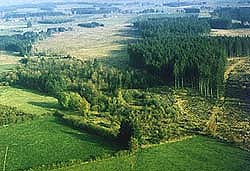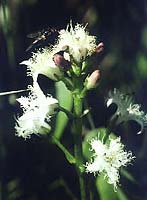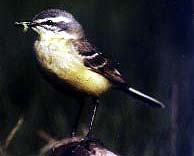
Seasons: [Entrances], [Spring], [Summer], [Autumn], [Winter]
Description: English, [Franšais], [Aerial Photographs]
Destruction of the Environment by Management: The Fight Against Nature
|
Commanster
|
The Commanster Swamp, a Biological Jewel, Outside of Time.
| Created in the framework of the Black Stork Programme, the RNOB Reserve at Commanster is a model of its kind, so great is the biodiversity that one can observe there. A jaunt in the Ardennes that is worth the detour ... |  |
Full of traditions and of history, the Ardennes have passed through history in the company of human beings who have slowly modelled the landscape that characterises them today. During recent decades, human pressure has increased and activities of a more industrial type have developed, often with the consequence that the natural environment has deteriorated. The equilibria in place for centuries have suffered profound modifications and the richest zones from a biological point of view have melted like snow in the sun ...
Formerly, Commanster swamp had been mowed by the local farmers to produce fodder to feed their animals or to provide their bedding. But this was progressively abandoned with the appearance of the first agricultural machines, too heavy for this type of land constantly saturated with water. Progressively forgotten, this humid zone almost completely escaped from modern human covetousness. This allows us, spring after spring, to observe the spectacle that Nature offers us.
Coticules and Cherbins
The RNOB Reserve is situated at the extreme northern point of Luxembourg Province (Belgium) in the territory of Vielsalm Commune. This region is well known for its geological riches, and notably the famous "coticule" (a stone for sharpening razors, unique in the world) and the "cherbins", the slates made from "phyllades" that still cover the roofs of many old village buildings.
Perched on a high plateau, the RNOB Reserve created in 1990 stretches mainly along a small stream in a strip about 100 metres wide and a kilometre long. It melts into a typically Ardennes landscape with its villages, its meadows, and its woods mainly composed of conifers. Several other RNOB reserves also created in the framework of the Black Stork Programme can also be found within a few kilometres of this site.
The Peat Bog: Another World
The RNOB Reserve at Commanster is interesting for many reasons, especially for the botanist who will be able to satisfy his or her passions. The most interesting habitat of the site is undoubtedly the transitional peat bog surrounded by a birch and willow forest on sphagnum moss. The latter spreads over a third of the reserve which has a total area of more than 16 hectares. When you enter this zone, you will feel the strange sensation of venturing into another world, isolated from everything, forever immune and in perfect natural equilibrium.
Across the ages, peat bogs have formed the biological refuge for many species that were formerly wide spread in the region. These species now find their optimum in the zones situated much further north (boreal), much higher (mountainous), or much closer to the ocean (Atlantic).
Nordic or clearly mountainous plants can be observed in holes in the Commanster beat bog where the Downy Birch and Eared Willow are not too dense. We can mention several species of Sphagnum, Cranberries, the Chickweed Wintergreen, and two species of Cotton Grass.
 Bogbean |
The peat bog also includes several species whose presence is linked to the high levels of precipitation and humidity all year. We can list Cross-leaved Heath, the brightly yellow flowered Bog Asphodel as well as a small carnivorous plant scattered over the carpet of sphagnum, Common Sundew. Many small brooks begin in the middle of the swamp, feeding the stream the borders the reserve. In turn, it flows into a large stream, the Glain. Without describing in detail all of the other vegetal forms of this swamp, let us emphasise the presence of a few remarkable plants: Juniper, Spignel, Wood Cranesbill, Broad-leaved Marsh Orchid, Heath Spotted Orchid, Ivy-leaved Bellflower, Marsh Cinquefoil, and Bogbean, this superb plant that forms a dense pink floating carpet during its flowering period. |
An Environment Favourable for Many Animals
|
A multitude of insects gather nectar from the numerous flowers in the meadows of Angelica and Bistort. The butterfly experts will be able to identify the Ringlet, the Bog Fritillary, the Cranberry Fritillary, and the Violet Copper. Because of its isolation, this site is suitable for almost all the large mammals that inhabit this part of the Ardennes forest. In winter, on the fresh snow, you will have no trouble finding tracks of Roe Deer, Foxes, and Badgers. Wild Boar and Red Deer are rarely observed in this part of the Ardennes; on the other hand, a Wild Cat let itself be observed once in the reserve which it certainly frequents regularly. |
|
 Grey Wagtail |
The reserve provides shelter and cover for many birds. Besides the common species, we can observe the Great Grey Shrike, the Grey Wagtail, the Reed Bunting, the Whitethroat, and very likely the Redpoll. One zone of the site is particularly attractive for the Whinchat which we hope will soon nest again in this valley after appropriate management. |
Management: Encouraging Results
For 3 years, with the help of volunteers, we have conducted management days mainly dedicated to eliminating the conifers and clearing birch and willows. The results have been very encouraging, with the rapid and general recolonisation by many plants of great biological value, including the sphagnum. This confirms the great potential of the site. Three contracts currently involve neighbouring farmers in extensive pasturing and late mowing.
This text, signed by Phillipe Collas, appeared in the April 1996 issue of the RNOB magazine. Since then, the area of the reserve has been increased to more than 20 hectares.
English translation: Jim Lindsey| Pictures and text © RNOB |
Back to Ecology of Commanster